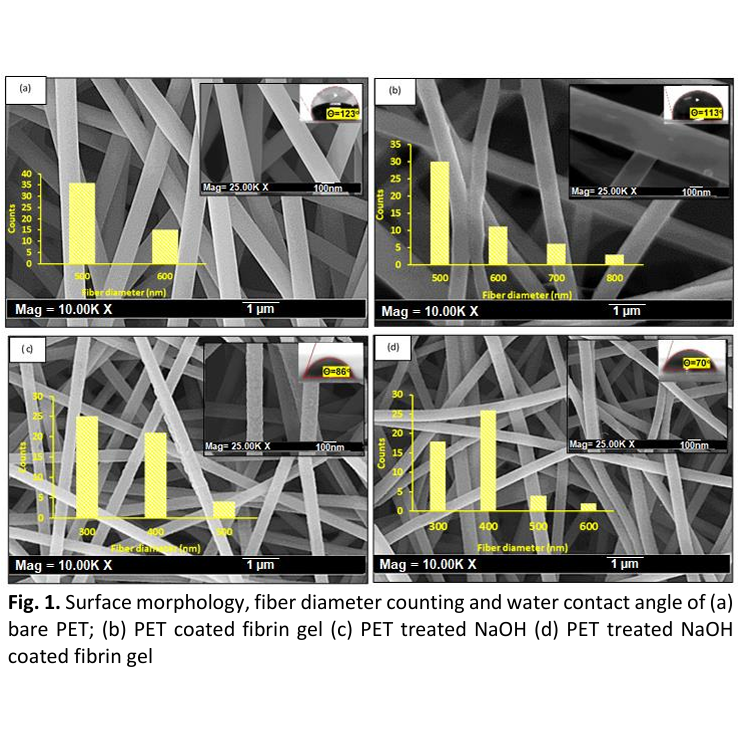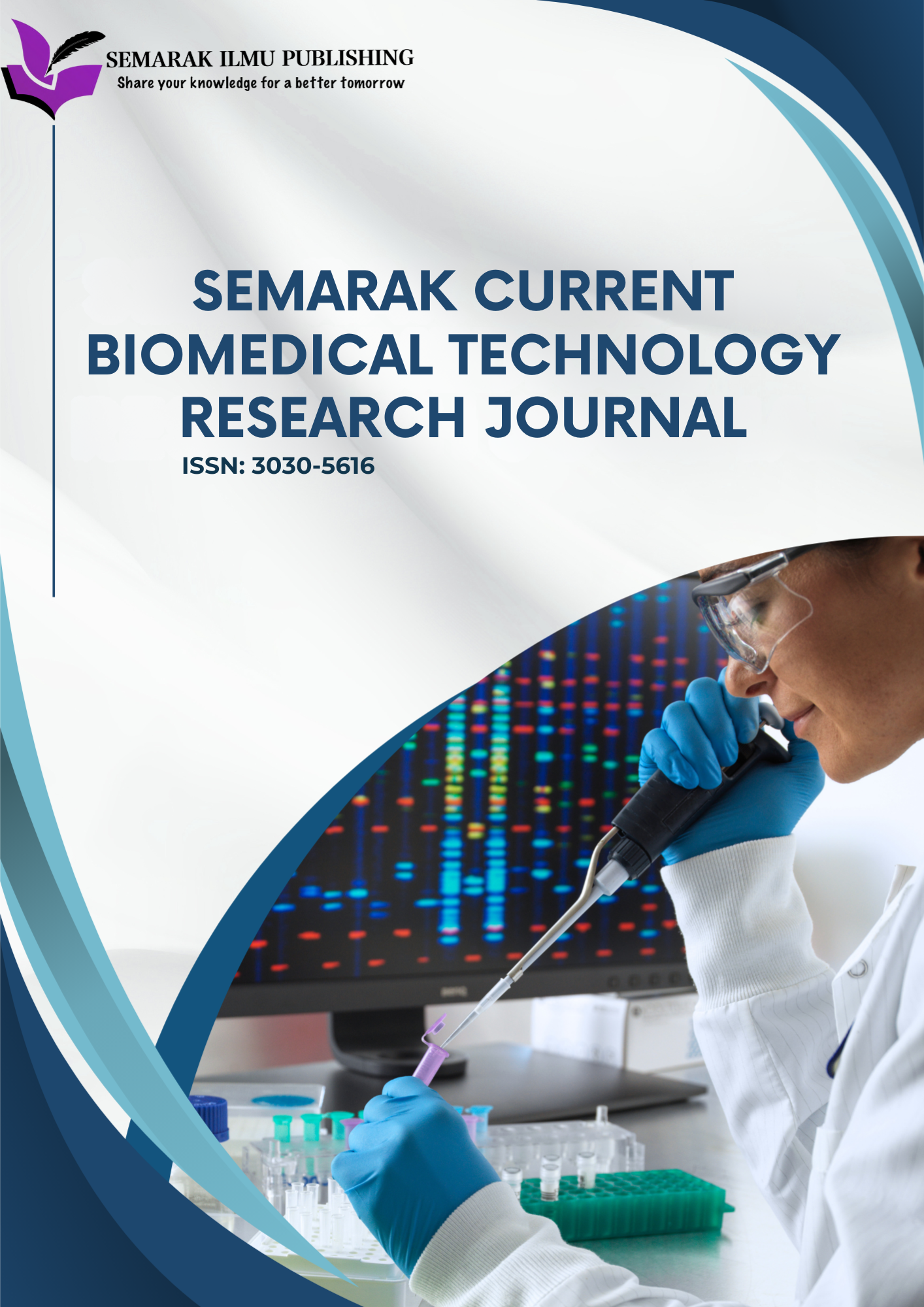In-Vitro NaOH Surface-Treated and Fibrin-Coated Electrospun Polyethylene Terephthalate Scaffolds for Small Diameter Vascular Graft
DOI:
https://doi.org/10.37934/scbtrj.3.1.1019Keywords:
Electrospinning, PET, fiber, NaOH surface treatment, fibrin gel, coatingsAbstract
The surface inertness of polyethylene terephthalate (PET) gives disadvantages including noncompliance, thrombogenicity, intimal hyperplasia, aneurysms, calcium deposition and infection also limited growth for small diameter vascular graft application thus limits their efficacy. To overcome this problem, electrospun PET fiber was treated with sodium hydroxide (NaOH) at 65oC for 1-hour. Fibrin gel was then coated onto NaOH treated samples and bare PET for comparison before seeding human umbilical vein endothelial cells (HUVECs) for 1, 7 and 14 days. The NaOH treatment resulted in reduced fibre diameter, enhanced hydrophilicity due to the existence of carboxyl and hydroxyl groups confirmed by FTIR results and contact angle measurements showed that the hydrophilicity of NaOH treated samples improved from 123° to 86°. After fibrin gel was coated on PET treated NaOH, in vitro tests showed increased cell adhesion and proliferation after 14 days of culture also formation of collagen after 21 days of culture. The PET treated with NaOH fibers coated with fibrin was proven attract HUVEC cells and promote endothelialization.
Downloads









